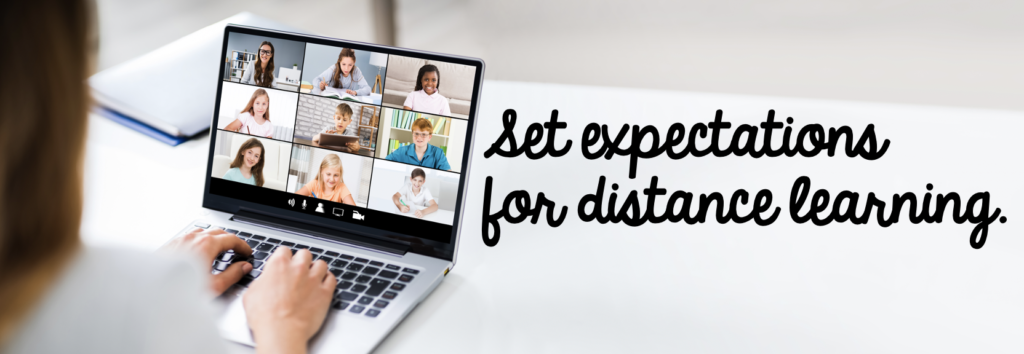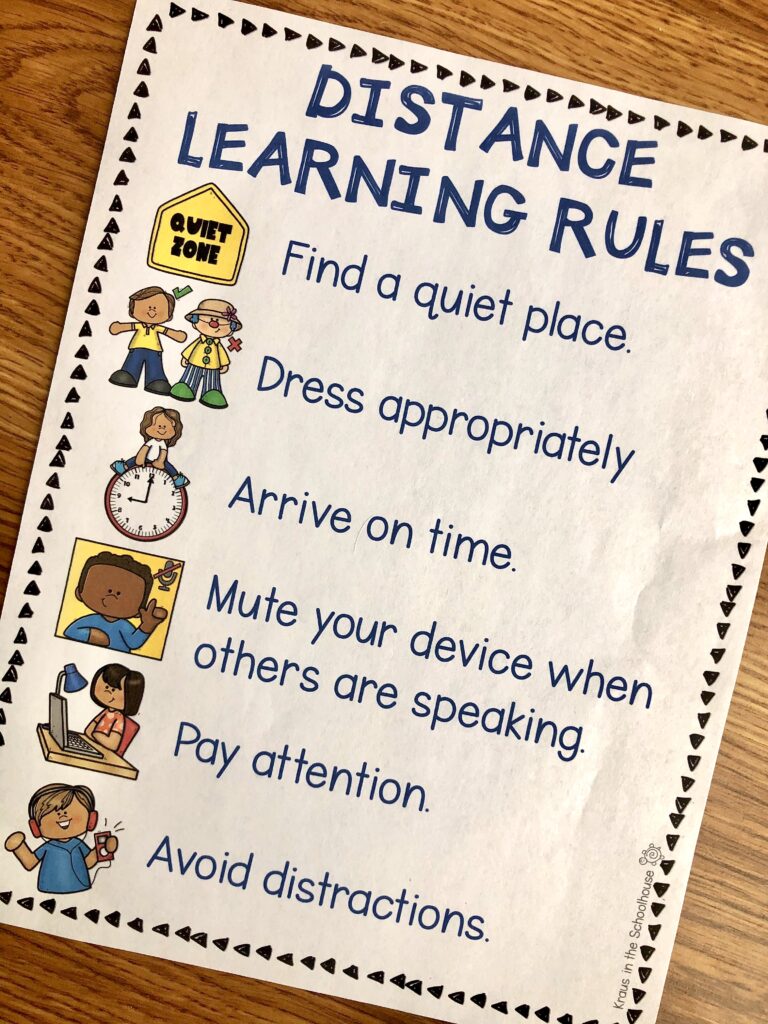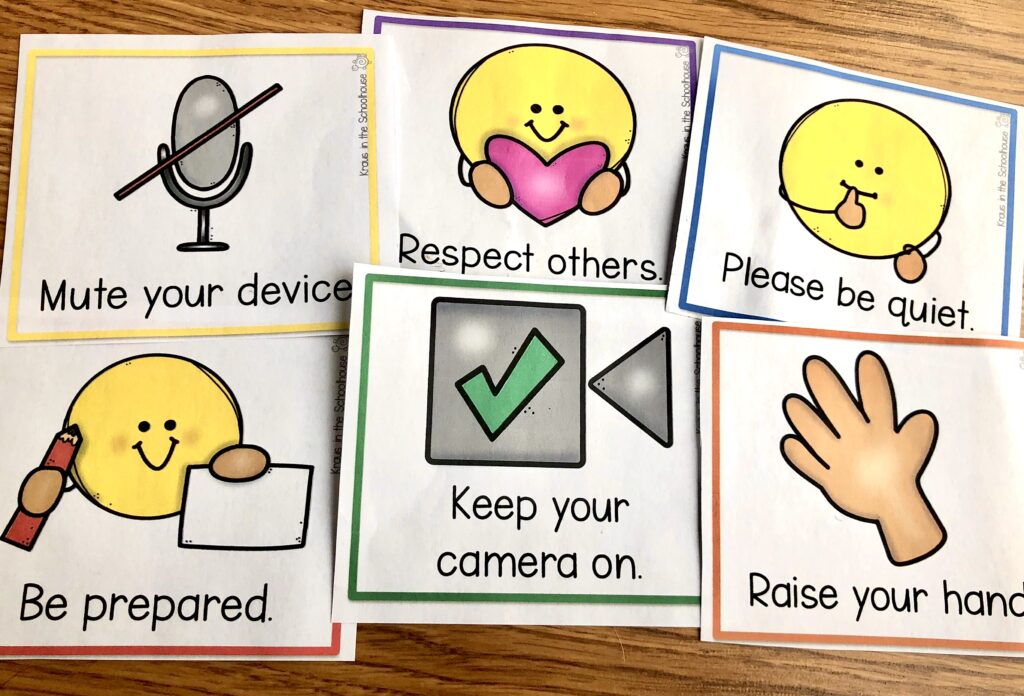Distance learning is the new reality for many schools around the world bringing a whole new level of anxiety for many teachers. As teachers adjust to this new form of education, many thoughts race through their heads:
- How will I teach my students so they are actively engaged?
- How will I make sure that my students understand the expectations?
- How can I easily remind students of class expectations?
- How can I encourage participation in a virtual environment?

One thing for certain is that no matter if you are teaching face to face or teaching virtually, classroom management is key. Rules and expectations must be clearly stated, reviewed, practiced, and recognized. Remember to be a role model for your students and adhere to these rules as well.
1. Find a quiet place.
Your students need to understand the importance of finding an area that will have minimal distractions. Some students are fortunate to have their own room or workspace where others might need some creative suggestions from you on the best place to choose.
2. Dress appropriately.
Students should dress as if they were going to school. Students need to realize that they are representing themselves and should take pride in what they wear.
3. Arrive on time.
Teachers should follow the set schedule and not wait for students. Students need to realize that punctuality is important and that they will miss valuable information if they are late.
4. Mute your device when others are speaking.
This is a rule that will most likely need to be practiced more than once. Luckily, most video conference apps provide an option for the teacher to mute the students. Of course, we want to encourage participation, but just like the classroom, it needs to be managed properly.
5. Pay attention.
Students might need to model what that looks like in a virtual world. Practice this expectation and praise students you spot paying attention. Students love to be noticed for meeting and/or exceeding expectations.
6. Avoid distractions.
This rule works best if they are working in a quiet place. Remind them to shut off all other electronics. Discuss why it is important to tune out any background noise and focus on their distance learning.

Now that the rules are set, use visuals as reminders for what is expected. Visuals are quick and easy to use and can accomplish the same as a verbal reminder without wasting any instructional time. This will enable the students on what SHOULD be done instead of what is NOT being done.
For example, you notice a student playing with action figures as they are watching you teach. Instead of verbally reprimanding the child, hold up the Put toys away card. This will enable the child to see your expectation without embarrassing him. Sometimes students might forget to mute their computer. By holding up a visual card, students can quickly mute it without stopping the flow of the lesson. Visual cards provide teachers with an easy way to keep kids on track and keep the lesson moving.

When reviewing the rules and expectations of distance learning it is important to demonstrate examples and non-examples. This do/don’t activity is a great way to discuss with your students what they should and should not do while they are learning digitally. This is a great way for your students to get a better understanding of your rules and expectations.

With distance learning, we have begun a journey into the digital world. To be successful, teachers should set up a classroom where students can actively engage and learn digitally.
Check out my next blog post on tips to help students reply to discussions when distance learning.


